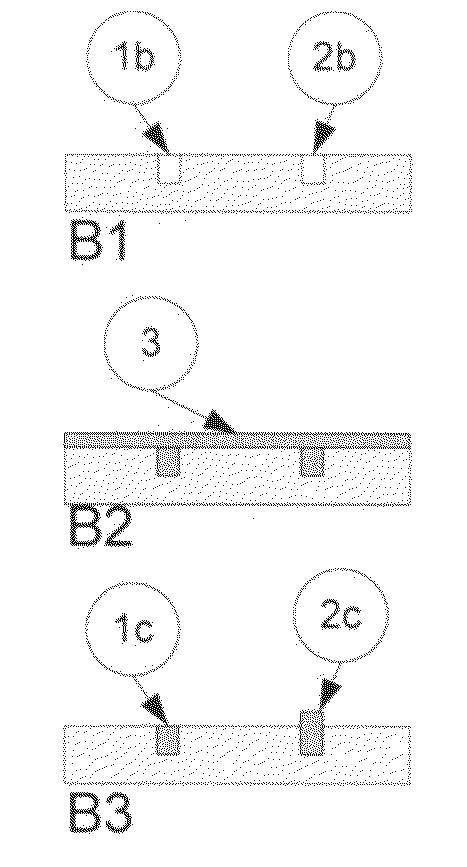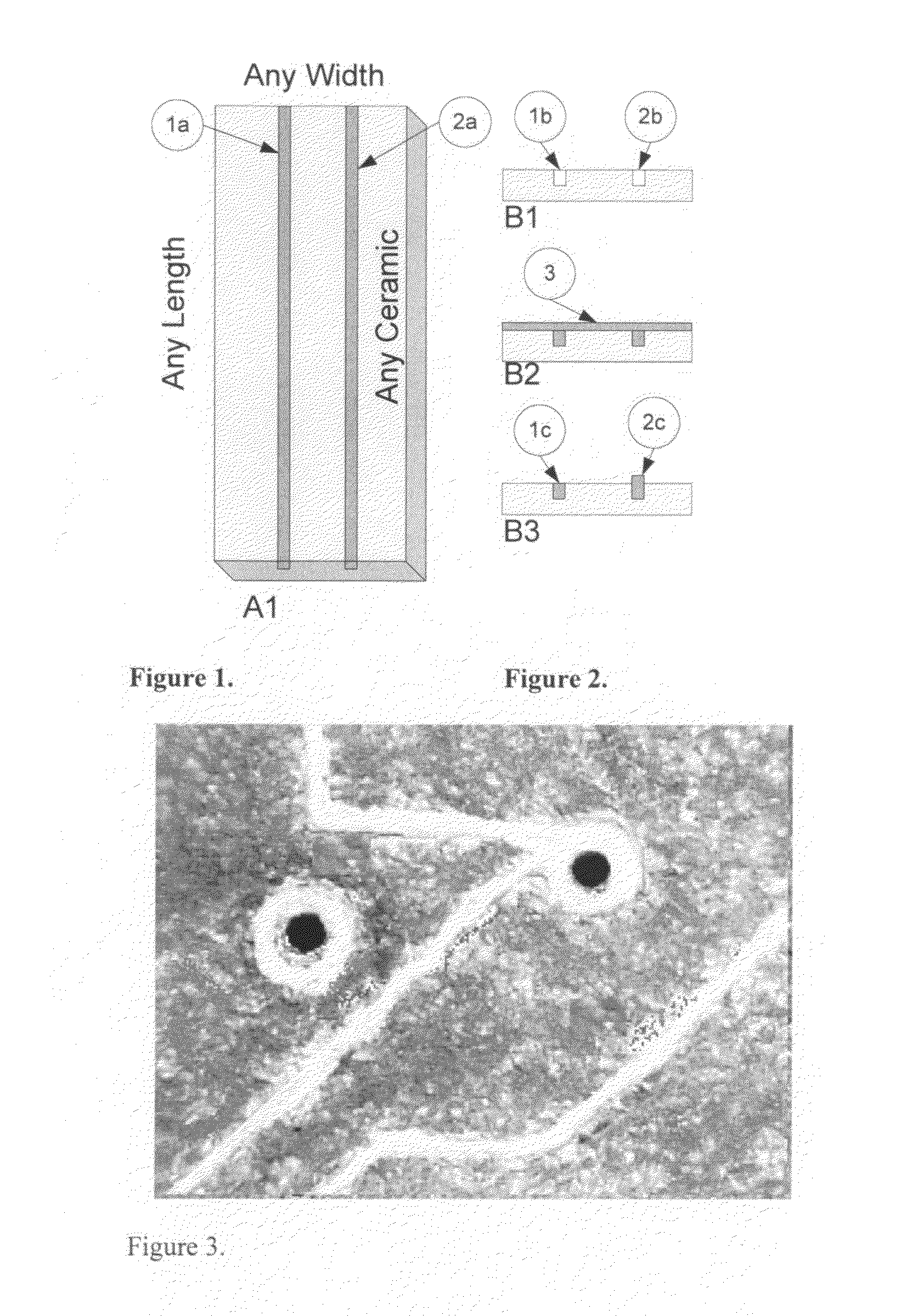Method for high-temperature ceramic circuits
a ceramic circuit and high-temperature technology, applied in the direction of superimposed coating process, resistive material coating, liquid/solution decomposition chemical coating, etc., can solve the problem of prone failure of the temperature cycling of the ltcc assembly, and achieve the effect of reducing the aging process
- Summary
- Abstract
- Description
- Claims
- Application Information
AI Technical Summary
Benefits of technology
Problems solved by technology
Method used
Image
Examples
Embodiment Construction
[0024]This invention allows for the creation of electronic circuits to be manufactured as electrically conductive recesses in a non-conductive material as ceramic.
[0025]Under work conducted at Sandia National Labs by the inventors Joseph Henfling and Randy Normann, the process of creating a metal layer onto a clean ceramic surface was demonstrated as illustrated in FIG. 1.
[0026]FIG. 1 illustrates that there are no size limitations in length, width of the conductive traces. Our process allows for the metal conductor to be placed on the ceramic after the ceramic has been cured.
[0027]Under work conducted under DOE grant to Perma Works LLC, inventor Randy Normann developed the concept illustrated in FIG. 2 to commercial practice shown in FIG. 3. FIG. 2 illustrates an example creation of two conductive traces on non-electrically conductive ceramic. The invention is the construction of any number of conductive traces, mounting pads and interconnecting via within manufactured recesses in a...
PUM
| Property | Measurement | Unit |
|---|---|---|
| Temperature | aaaaa | aaaaa |
| Electrical conductivity | aaaaa | aaaaa |
| Power | aaaaa | aaaaa |
Abstract
Description
Claims
Application Information
 Login to View More
Login to View More - R&D
- Intellectual Property
- Life Sciences
- Materials
- Tech Scout
- Unparalleled Data Quality
- Higher Quality Content
- 60% Fewer Hallucinations
Browse by: Latest US Patents, China's latest patents, Technical Efficacy Thesaurus, Application Domain, Technology Topic, Popular Technical Reports.
© 2025 PatSnap. All rights reserved.Legal|Privacy policy|Modern Slavery Act Transparency Statement|Sitemap|About US| Contact US: help@patsnap.com


